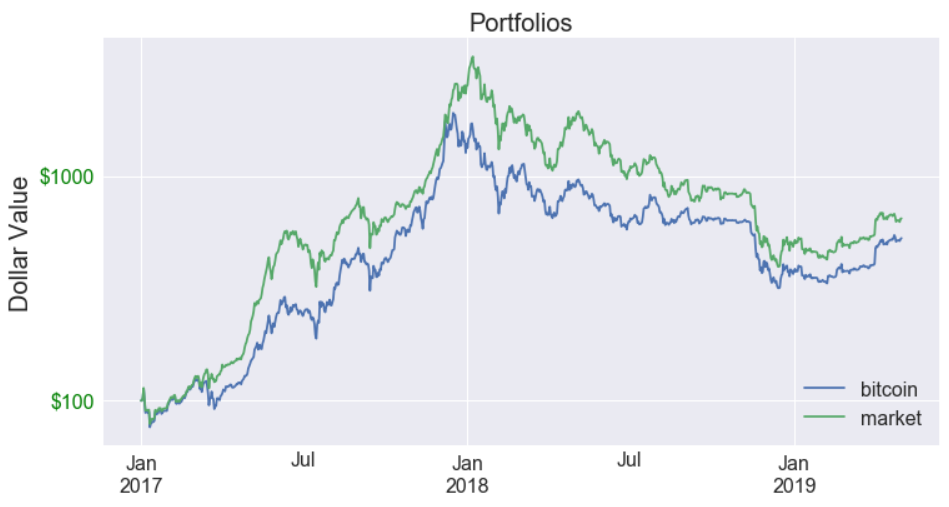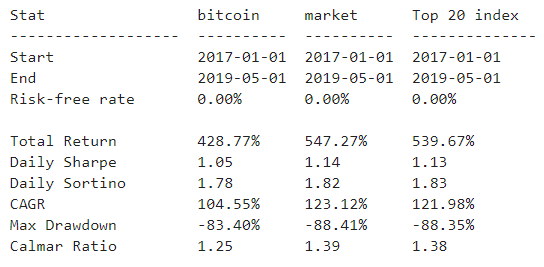Latest news about Bitcoin and all cryptocurrencies. Your daily crypto news habit.
Why a Crypto Index Wins in the Long Run.
There are almost an infinite amount of ways to approach investing, but my favorite is index investing and it turns out to be amazing for cryptocurrency investing. In this article, we are going to explore index investing for cryptocurrencies with a data-driven approach.
Index investing is a strategy that is gaining popularity in recent years. It’s a simple strategy that can yield great returns without demanding much from the investor.
But why does it work? And why use it for cryptocurrency investing?
Let’s start at the beginning.
The dream of the average cryptocurrency investor is finding the next Bitcoin. A cryptocurrency that rises in value faster than other cryptocurrencies and making a huge return out of it. But finding the next Bitcoin takes time. Reading into the fundamentals, using technical analysis on the price and much more.
Which basically translates to wanting to outperform the market by actively managing investments: investing time to get a higher return than the market average. Which has been attempted by actively managed funds and about 92% of them failed to do that over a course of 15 years.
Actively managed funds aren’t everyday investors, these are fully professional funds managing millions. Not only is the return worse for 92% of them but also everyone that invested time for those investments basically lost that as well, which is even more valuable.
So if most people are probably not that good at managing investments, what about the monkeys?
The Monkeys of Investing.
Back in 1973 in the famous book by Burton Malkiel “A Random Walk Down Wallstreet” Malkiel stated that:
“A blindfolded monkey throwing darts at a newspaper’s financial pages could select a portfolio that would do just as well as one carefully selected by experts.”
This basically means that what a person invests in and the performance of that investment probably has nothing to do with the analysis and tools used. The performance is just random, which is why a monkey could do it just as well.
The reasons for that are explained in the book and is too much to dive into right now but here is a good source about some of the reasons why that is such as the zero-sum game, the efficient market theory and the challenge of obtaining persistent outperformance.
In short, it all boils down to a pretty simple sentence:
Nobody knows the exact future for certain and because of that, almost nobody can consistently pick the winners.
Instead of using experts, different analyses and tools, Burton recommends to simply buy an index: Basically, a collection of assets that represent a market or a certain sub-category of a market and aims to capture the return of the said market.
This is done through diversifying over assets based on their market valuation (market capitalization). The market valuation defines the weights for the assets in the index. For instance, if Apple is worth 10% of the entire stock market it will be 10% of the stock index.
As an example, you could buy the S&P500 index which tries to capture the return of the stock market by assigning weights to the top 500 stocks based on their market capitalization( see the Apple example above ). As stocks increase and decrease so does the ranking of those stocks, an index reflects that by changing the index composition periodically.
Adjusting an index composition to reflect the market is called rebalancing, Trading the assets so that it reflects the current market. We are not going to dive deep into this but generally speaking, doing this weekly or monthly is acceptable with trading fees in mind.
Now, let’s apply all this information to the cryptocurrency market and see how we can make an index of the cryptocurrency market and if the return is decent!
Building a cryptocurrency index with data.
The graph above is the result of a backtest I made based on historical data collected from Coinmarketcap.com with the help of Python. In total, we have daily data from April 2013 till March 2019 with over 2118 different cryptocurrencies. But we are going to use some of the more recent years for this analysis, 2017–2019.
Backtesting refers to applying a investing strategy to historical data to verify how that strategy would have performed during the specified time period.
After analyzing the data we end up with some pretty interesting statistics and graphs to support the idea of indexing in the cryptocurrency market.
Diversification
An index is better than investing in a single asset such as bitcoin, because of the diversification an index offers, hence it has a higher return. As the market matures more cryptocurrencies are created and so, different uses cases that can gain traction and a market share.
An index captures that through including multiple assets ranked by market capitalization. But the market changes every day and so must the index. To illustrate this let’s have a look at the 20 largest assets and their market share on a specific day.
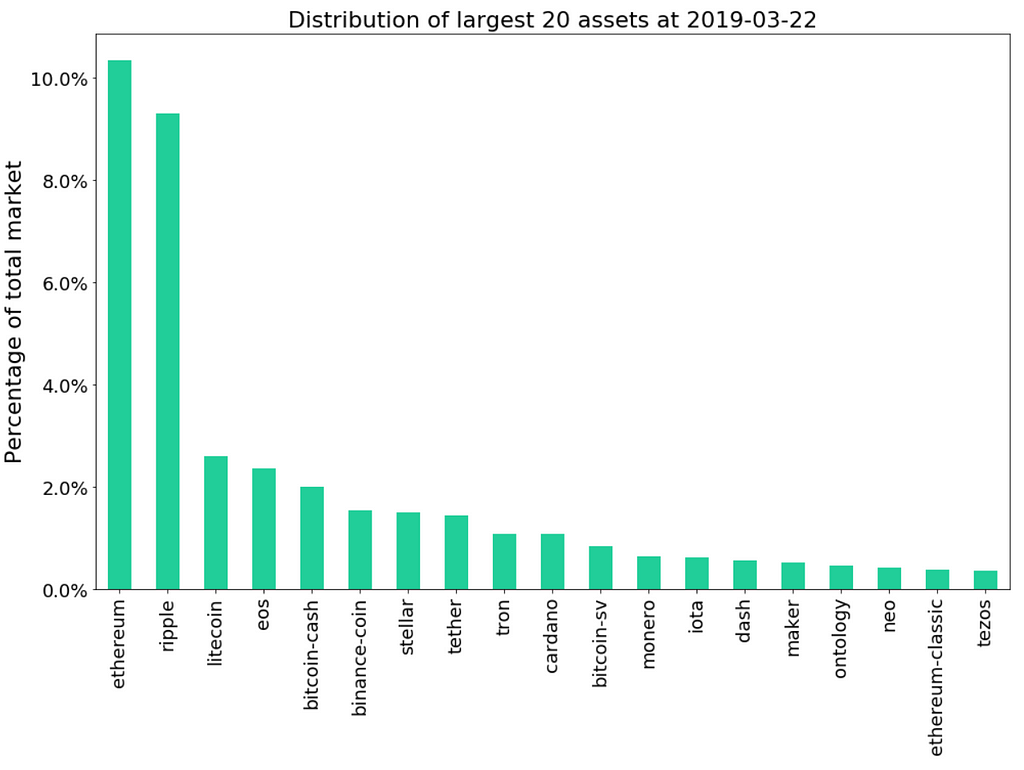 Excluding Bitcoin in the graph.
Excluding Bitcoin in the graph.
To illustrate that let’s go back in time and see what the top 20 cryptocurrencies were at the exact same day in 2017. Not only are there different coins but the distribution is also different.
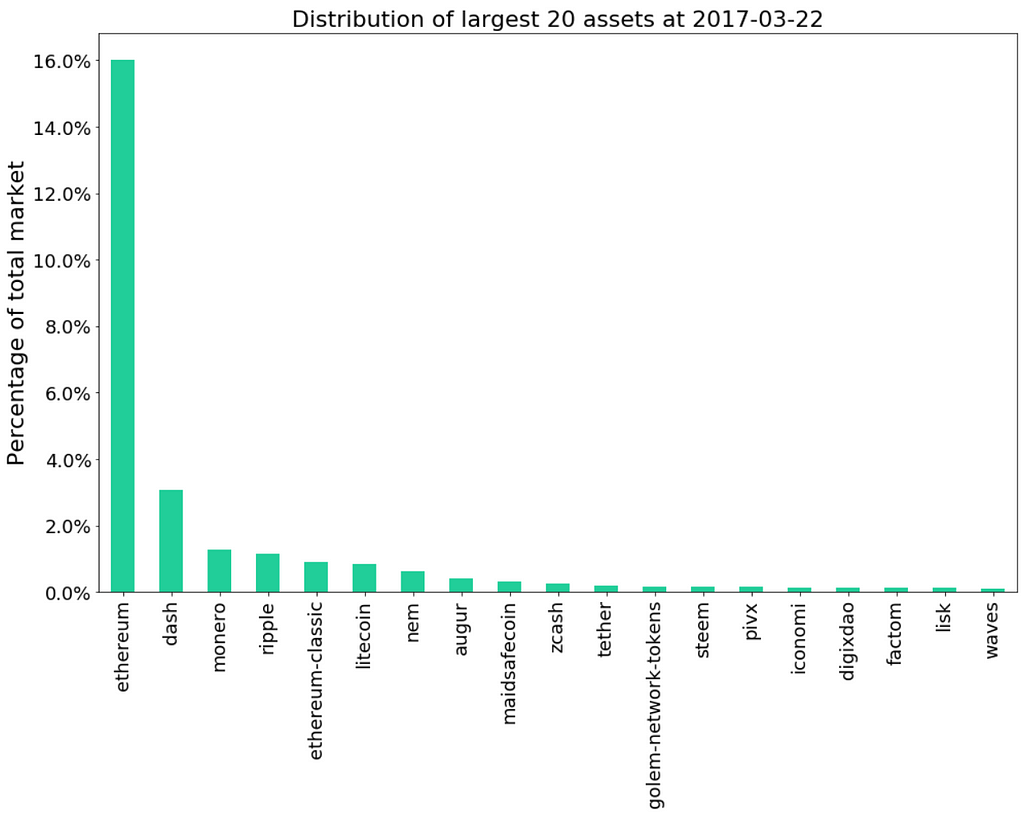 Excluding Bitcoin in the graph.
Excluding Bitcoin in the graph.
Rebalancing
Cryptocurrencies increase and decrease in value over time. Over time asset’s their percentage of the total market will change and there for the distribution of the index must do the same in order to reflect the market accurately. We are going to rebalance the index each week to change with the market.
Now we aim to make an index for ourselves. We can do that by buying as much of the market as possible with trading limitations in mind, the top 20 should be enough considering it holds about 90% of the market’s total value.
What does the diversification, with rebalancing, of the index look like over a span of 3 years?
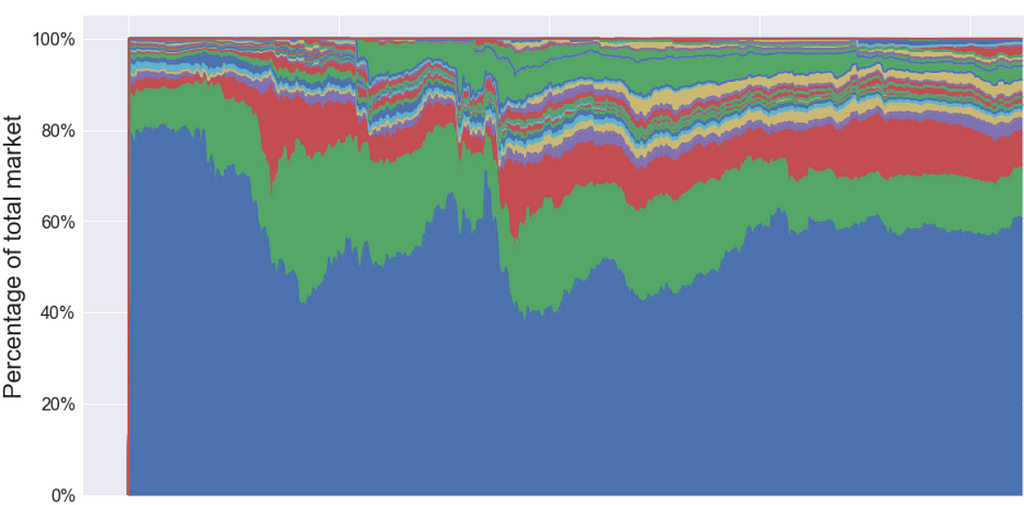 A total of 59 assets have entered/exited the index in 2+ years. Not enough colors for them all, but it gets the message across.
A total of 59 assets have entered/exited the index in 2+ years. Not enough colors for them all, but it gets the message across.
The result
Now we have made an index that takes the top 20 cryptocurrencies. Takes the market capitalization to assign weights to the cryptocurrencies and rebalances each week. Let’s have a look at how well it follows the market with a final backtest.
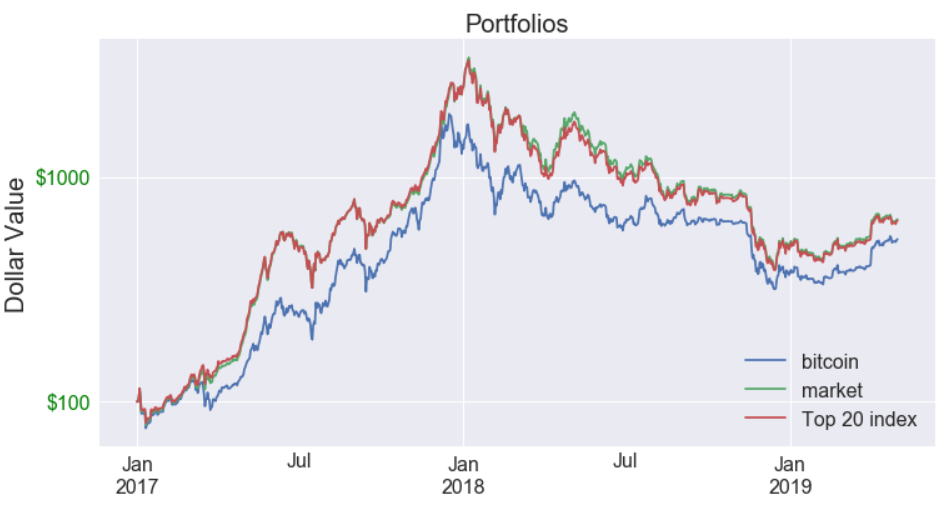 Log scale for those wondering.
Log scale for those wondering.
The index seems to track the market pretty good, let’s have a final check with a summary on some key numbers.
Now we have all the data we need on investing with an index in the cryptocurrency market and as far as I can see it seems to yield some great results. But data isn’t everything.
It’s about your personal view of the future.
Investing is about taking a leap of faith, a bet, on how the future of the world will form itself. For example, if you believe that companies will remain to capture economic value, invest in that. The same goes for blockchain. Some believe it is the next step in the evolution of accounting, some believe it will be a radical change to ownership in the modern age. But it will always remain a leap of faith because nobody knows the future for certain. So if you intend to invest in something start with asking yourself;
Does this investment align with my view of what is relevant in the future?
Adam Ludwin wrote in a great article:
Should one or more of these decentralized applications actually become an integral part of the world, their underlying crypto assets will be extremely valuable.
Which is also why index investing makes a lot of sense, no matter what happens you will always own the most valuable crypto assets and climb with them as they increase in value.
Instead of focusing on all kinds of different kinds of analysis forms, start with your personal view of the future and align your investments with that. And I believe anyone interested in the cryptocurrency market should have that opportunity. Which is the exact reason why I founded IndexMonkey.com . A startup that lets anyone create a cryptocurrency index and start their own bet on the decentralized future, for free.
In the following post, we are going to explore indexing and how to increase return/risk, below is a sneak peek!
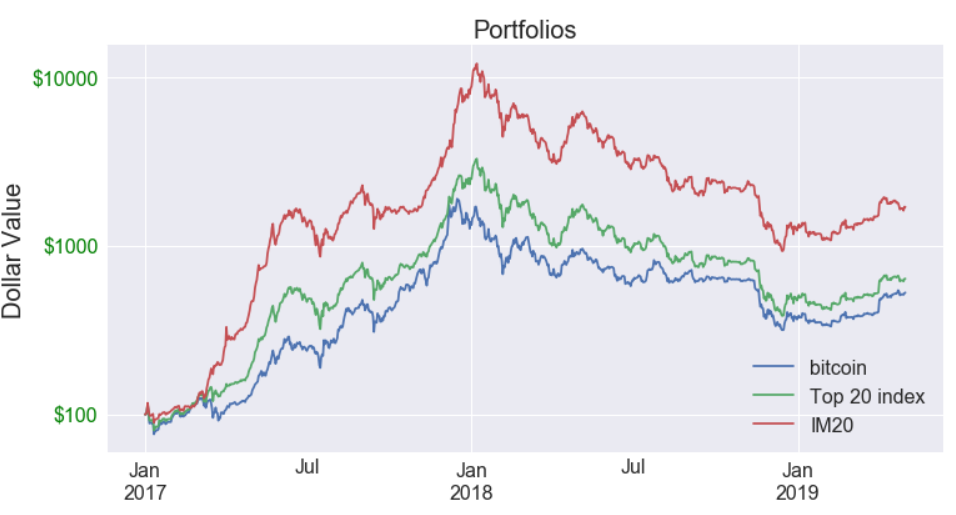 More on IM20 in the following post!
More on IM20 in the following post!
Why a crypto index wins in the long run. was originally published in Hacker Noon on Medium, where people are continuing the conversation by highlighting and responding to this story.
Disclaimer
The views and opinions expressed in this article are solely those of the authors and do not reflect the views of Bitcoin Insider. Every investment and trading move involves risk - this is especially true for cryptocurrencies given their volatility. We strongly advise our readers to conduct their own research when making a decision.

